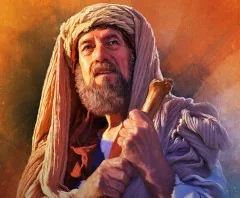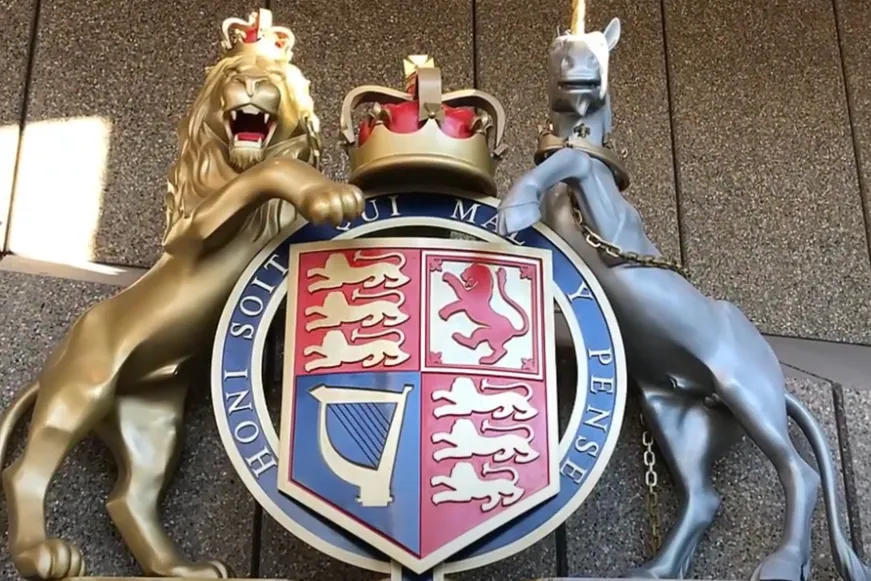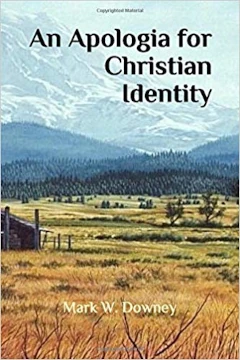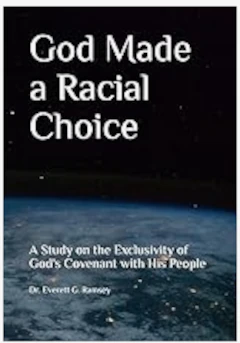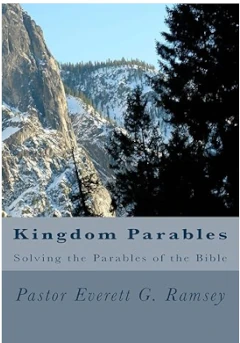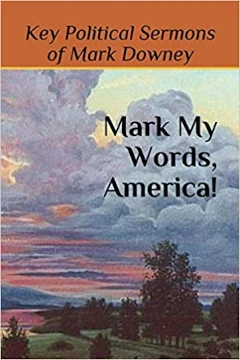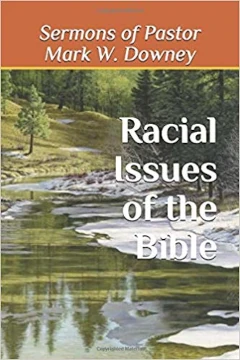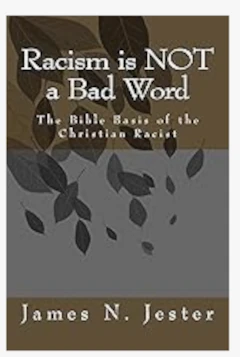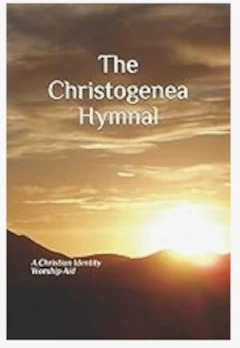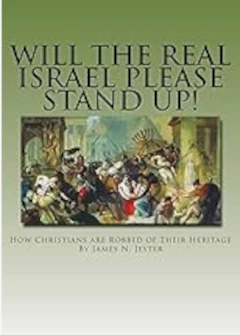Great Britain's Chaos - Part 2
Presbyterianism vs Episcopacy
PRESBYTERIANISM VS. EPISCOPACY
Copied from the sermon notes of Pastor Don Elmore
June 5, 2022
Scripture Reading: Deuteronomy 28:48: “Therefore shalt thou serve thine enemies which the LORD shall send against thee, in hunger, and in thirst, and in nakedness, and in want of all things: and He shall put a yoke of iron upon thy neck, until He have destroyed thee.”
This is part 2 of the four-part series on the conditions of Great Britain while America was a colony. If you think that things are bad in America today, they will have to get a lot worse, and I think that they will, to surpass what happened in Great Britain. Great Britain had:
- Three civil wars in ten years;
- Wars between the Church of England and the Presbyterians of Scotland;
- Wars between the Puritan Parliament and the Catholics of Ireland;
- Wars between the Puritan Parliament and the Protestant/Catholic Royalty; and
- The Jews were readmitted back into their country; after being absent for almost 400 years, and started issuing usury loan debt to the kings, nation and citizens.
THE SEVEN STUART KINGS AND QUEENS (1603-1714)
King James VI and I (1603–1625)
King Charles I (1625–1649)
The Republic of England (1649-1660). [King Charles I was beheaded in 1649, which ended the Monarchy. Charles II, his son, was the next in line to rule in England. He escaped to France and Holland in exile. The Puritan Parliament ruled first, then the Puritan Oliver Cromwell took over, then his inept son, Richard; they ruled for a combined total of 11 years. The Monarchy was restored when Charles II was called back by the Puritans to the throne in 1660 from exile in Holland.]
King Charles II (1660–1685)
King James VII and II (1685–1688); [The throne was abdicated after a bloodless invasion of forces from the Netherlands. King William III and his wife, along with a huge loan from a Jewish financier, replaced James II as the Monarch of England. But the monarchy was no longer an absolute ruler; it became a Constitutional monarchy with Parliament having the most power. The Jews became a leading part of Great Britain.]
King William III and II (1688–1702)
Queen Mary II (1688–1694)
Queen Anne (1702-1714)
SHORT GENEALOGY OF THE STUART FAMILY:
- James I of England m. Anne of Denmark
- Charles I, son of James I m. Henrietta Maria of France
- Charles II, son of Charles I m. Catherine of Braganza, Portugal. King Charles II fathered many illegitimate children by numerous mistresses but had no legitimate children.
- James II, son of Charles I m. Anne Hyde of England and after her death m. Mary of Modena, Italy. King James II fathered many illegitimate children by numerous mistresses. Had two daughters by Anne and a son (see below) by Mary, among others.
- James Francis Edward Stuart, son of King James II and Mary of Modena, was baptized as a Catholic, and this led to his father’s abdication of the throne. Many (especially Catholics) thought that he was unfairly abdicated, and this led to the Jacobite rebellion which lasted for over 100 years.
- Mary II, daughter of James II of Anne Hyde of England m. William III of Orange, Netherlands whose uncle and father-in-law was King James II.
- Anne, daughter of James II and Anne Hyde m. Prince George of Denmark; died childless.
The seven Stuarts, who were kings and queens of England, married people from Denmark (2); France (1); Portugal (1); Italy (1); Netherlands (1) and England (2); one was remarried and had two wives.
HOW DID THEIR REIGNS END?
- James I of England; died of a stroke
- Charles I, died of a beheading
- Charles II, died of ulcers and complications
- James II, last Roman Catholic king; abdicated the throne and died in France of a cerebral hemorrhage
- William III died of pneumonia while Mary II died of smallpox
- Anne died of a stoke—had 18 pregnancies; five stillborn; eight miscarriages; four died in infancy; one died at age 11; she died with no surviving children.
WHAT HAPPENED IN AMERICA?
The situation of the thirteen colonies was affected by what happened in Great Britain. And what was happening in Great Britain? It was pure chaos:
- Absolute power of the first four kings,
- Three civil wars in less than ten years,
- Several wars between countries in the United Kingdom,
- Regicide,
- Interregnum,
- Parliamentary rule,
- Lord Protector rule,
- Jews allowed back into the country after 400 years to made loans with usury to the royalty, nation and its citizens
- Removal of Jewish restrictions in its immigration laws,
- Abdication of the throne by an inept ruler,
- Restoration of the Monarchy,
- Another abdication of the throne, this time by a Catholic,
- Bloodless invasion of foreign forces to take over the throne financed by Jews,
- No child available to take over the throne.
UNIVERSITY OF VIRGINIA
All Colleges and Universities have a mascot. There are the University of Cincinnati “Bearcats”; the Jesuit Xavier University “Musketeers”; The Miami University “Red Hawks”; the University of Kentucky “Wildcats”, The Ohio State “Buckeyes”, the Ohio University “Bobcats”, etc.
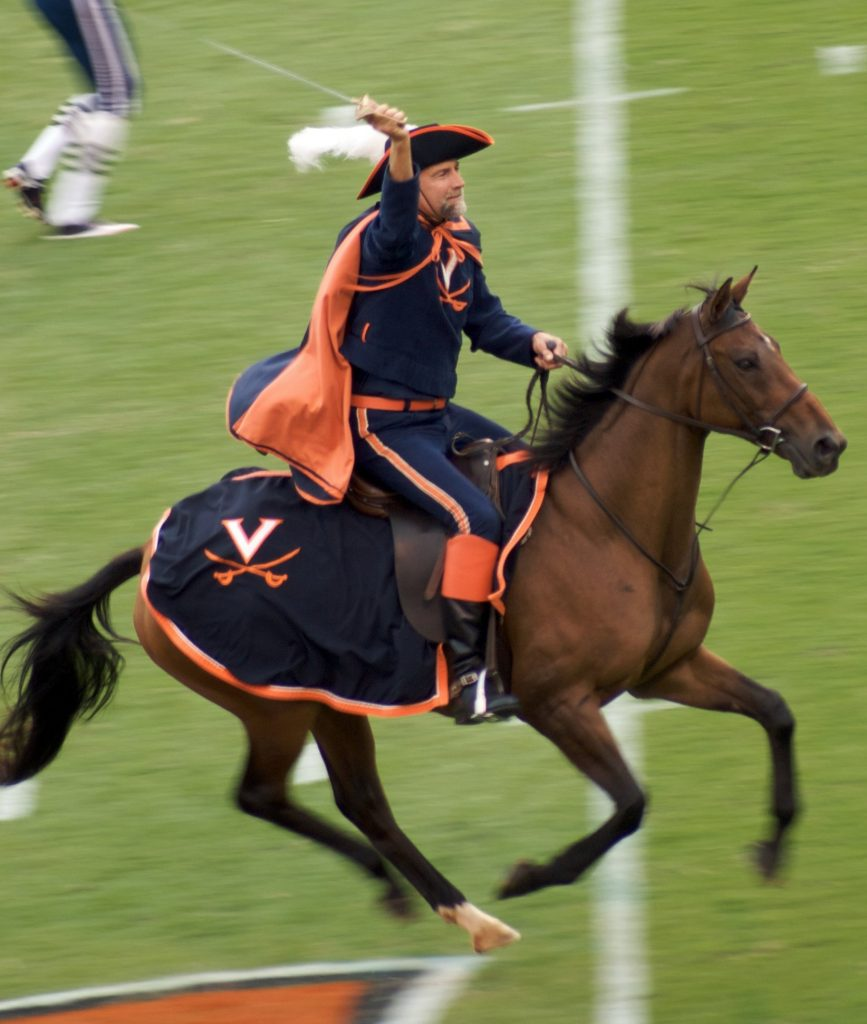 But does anyone here know what the mascot of the University of Virginia is? If you do, you know a little bit about the sermon today.
But does anyone here know what the mascot of the University of Virginia is? If you do, you know a little bit about the sermon today.
There is a historical basis for the identification of the University of Virginia with “Cavaliers”. I have known what the University of Virginia’s mascot was since I was a teenager. But I didn’t know what it represented or why it was the University’s mascot. In other words, I was a typical ignorant teenager who grew into a typical ignorant adult.
As the official mascot of the University of Virginia, “the Cavalier”, symbolized by an orange and blue rider wearing a plumed hat, prompts students and alumni to cheer for their team. The word “Cavalier” appears in the names of businesses across Virginia, and historical societies have erected numerous monuments to men whose attributes embodied the “Cavalier” ideal.
What is the historical basis for the identification of Virginia with the Cavaliers? Virginia became a royal colony in 1624, meaning that it was subject to the king’s authority (King James I) and administered by a representative of the Crown. Under English rule, the colony’s planter elite enjoyed increased political autonomy and comparatively relaxed trade regulations, which resulted in a more profitable tobacco trade.
But in the 1640s, as clashes between King Charles I and Parliament became more frequent, Virginia planters began to fear for their economic and social well-being. This anxiety was worsened when Parliament attempted to reinstate the Virginia Company—but King Charles I reassured Virginia that this would not happen under his rule. This helped solidify Virginia towards the Royalist position, as did the influence of the colony’s governor, Sir William Berkeley. Economic leaders of Virginia began to associate themselves with the Royalists, or Cavaliers, who fought for and remained loyal to King Charles I during the English Civil Wars (1642–1648).
Religion also was a factor in Virginia’s transformation into a Royalist stronghold. Most Virginia planters belonged to the Church of England and regarded Puritans, who held the same religious beliefs as many Parliamentarians, including Oliver Cromwell, as responsible for the war that threatened their king and undermined their security. In 1642 the General Assembly passed legislation requiring all ministers in Virginia to conform to the Church of England and granting Berkeley the right to expel any dissenters. The legislation firmed up the alliance with the Royalist, anti-Puritan cause and gave rise to the characterization of the Virginia Cavalier as one who displayed loyalty to the Crown and adhered to the doctrine of the Church of England.
While Virginians were not involved in the military aspect of the wars in England, they resisted its new Commonwealth government in 1649, proclaiming Charles II as King of England after receiving news that Parliament had tried and executed Charles I. Barbados, Bermuda and Antigua, islands in the Caribbean also proclaimed their allegiance to Charles II and suffered the same consequences as Virginia.
To retaliate, the Commonwealth ordered a blockade of the colony. Governor Berkeley, his council, and the House of Burgesses ultimately surrendered to Parliament in 1652, but Virginia’s demonstration of loyalty to the monarchy helped reinforce its Royalist identity.
Virginia, New England, Maryland, South Carolina and Pennsylvania were English settlements, but religion was a dividing factor in the colonies as well as in the mother country. Most of Virginia was members of the Church of England; while most of Massachusetts and surrounding area were members of the Puritan and Pilgrim churches. Maryland was mainly a Catholic state, while Pennsylvania and South Carolina were where most of the Presbyterians settled.
Meanwhile, Virginia was battling for its survival in a war against the Powhatan Indians (1644-1646) which saw a tenth of the colonial population killed in the initial massacre. Royalist propaganda accused the Roundheads, those who fought against the Monarchy and for Oliver Cromwell, of stirring up the natives. As a result, most Puritans and Presbyterians were expelled from the Virginia colony. After the regicide, Virginia remained faithful to the House of Stuart, although the English Parliament had decreed that support for Charles II was treason.
OLD DOMINION UNIVERSITY
Old Dominion University was founded in 1930 by the College of William and Mary, the second oldest university in the United States. William and Mary College was named after King William III and Queen Mary II of England during the Glorious (or was it an Inglorious?) Revolution (1688).
Established as an extension of William and Mary in Williamsburg, Virginia, and Virginia Polytechnic Institute in Blacksburg, Virginia, Old Dominion began educating teachers and engineers. The two-year school rapidly evolved into a four-year institution and was granted independence in 1962 as Old Dominion College.
Old Dominion University derives its name from one of Virginia’s state nicknames, “The Old Dominion”, given to the state by King Charles II of England for remaining loyal to the crown during the English Civil War.
THE STUART FAMILY
England was the mother country of America and many other countries, like Canada, Australia, New Zealand, South Africa, etc. But it experienced very troubling times in the 1600s and 1700s.
There was the fierce battle between the Protestant Puritan Church of England and the Protestant Presbyterians in Scotland and the battle between the Protestant/Catholic Royalty and the Protestant Puritan Parliament in England. England became a Commonwealth for 11 years supplanting the Monarchy. The Royalty went from the “divine rights of the kings” to a Commonwealth Republic to a Monarchy again, but this time with a limited constitutional non-Catholic monarchy, with a Bill of Rights and an increasingly powerful Parliament.
And the main churches in England and Scotland, Ireland and Wales were at constant battle with one another; that is Catholic, Presbyterian, Church of England, Pilgrim and Puritan. But the enemy of Christianity, the Jews managed to slip back into their country, without hardly any notice, financially backing the change in governments.
The Stuart dynasty ruled from 1603-1714 (minus eleven years of the Republic). And what a rule they had. Scandals, mistresses, marriages with persons from other countries, illegitimate children outside of marriage, a beheading, abdication of the throne, throne taken by invasion and 18 pregnancies by one Queen, but no children to continue their rule.
The first Stuart King was James I of England. But he was first James VI of Scotland. He was king of Scotland for 36 years and then served as king of Scotland plus England and Ireland for 22 more years.
But there was the battle between the Scots over church structure and doctrine with King James I, his son Charles I and with Charles II and James II. There were several major conflicts. A summary of King James I of England’s rule:
KING JAMES I
- The Gunpowder Plot of 1605, often called the Jesuit. Treason, there was a failed assassination attempt against King James I by a group of English Jesuit Catholics led by Robert Catesby who sought to restore the Catholic monarchy to England after decades of persecution against Catholics.
- The Spanish match was a proposed marriage between Prince Charles, the son of King James I of Great Britain, who became King Charles I, and Maria Anna of Spain, the daughter of Philip III of Spain. Maria Anna was a Catholic and came from a very rich family. Negotiations took place over the period from 1614 to 1623, and during this time became closely related to aspects of British foreign and religious policy. This attempt to obtain money for the Royalty, with the marriage with a rich Catholic, failed and the engagement was eventually broken-up.
- The Millenary Petition was a list of requests given to King James I by Puritans in 1603 when he was travelling to London in order to claim the English throne. This list demanded the abolition of confirmation, wedding rings, and the term “priest” among other things, and that the wearing of cap and robe become optional. The petition had 1,000 signatures from Puritan ministers. This carefully worded document expressed Puritan distaste regarding the state of the Church of England and took into consideration James’ religious views. While many of the main Puritan goals were rebutted, the petition did culminate in the Hampton Court Conference, which eventually led James to commission a new English translation of the Bible.
- The Plantation of Ulster, Ireland by English and Scottish Protestants began, and the English colonization of North America started its course with the foundation of Jamestown, Virginia in 1607 and Cuper’s Cove, Newfoundland in 1610. The refugee English Pilgrims landed in Massachusetts in 1620 from Holland.
- King James I’s taste for political absolutism, his financial irresponsibility, and his cultivation of unpopular favorites, established the foundations of the English Civil Wars. King James I bequeathed to his son, Charles I, a fatal twisted belief in the “divine right of kings”, combined with a disdain for Parliament, which culminated in the execution of Charles I and the abolition of the Monarchy.
- In Scotland, King James I attempted to bring the Scottish Kirk (Church), which was Presbyterian, closer in rituals to the English Church, which was Anglican. The major uncompromising problem was that he wanted to reestablish episcopacy while the Presbyterians wanted rule from the “bottom up.” King James I returned to Scotland in 1617 for the only time after his accession to the throne in England, in hope of implementing Anglican ritual. But his rulings were widely resisted. King James I left the church in Scotland divided at his death.
- King James I was widely mourned when he died. For all his flaws, he had largely retained the affection of his people and had enjoyed uninterrupted peace and comparatively low taxation during his reign.
After King James I died, the throne was taken over by his son King Charles I. This is a brief summary of his rule:
KING CHARLES I
- In 1637, King Charles I attempted to force the Scottish Presbyterians to use the King’s Prayer Book and be under his chosen bishops. The King wanted to be the head of the Scottish Church. This set off the fierce battle between the Scots and Brits that lasted for 50 years.
- Between 1642 and 1649, armies loyal to King Charles I and Parliament faced off in two civil wars over longstanding disputes about religious freedom and how the “three kingdoms” of England, Scotland and Ireland should be governed. Notable outcomes of the wars included the execution of King Charles I in 1649, 11 years of republican rule in England and the establishment of Britain’s first standing national army.
- King Charles I’s marriage to a Catholic princess, 15-year-old Henrietta Maria of France, fueled suspicions among the Protestant Puritans that the King would introduce Catholic traditions back into the Church of England. King Charles I also believed strongly in his divine right of kings to rule, and in 1629 he dismissed Parliament altogether; he would not recall it for the next 11 years.
- Beginning in the late 1630s, King Charles I made efforts to establish a more English-like religious practice in Scotland, generating fierce resistance among that country’s Presbyterian majority. A Scottish army defeated Charles’ forces and invaded England, forcing him to recall Parliament in 1640 to generate the money to pay his own troops and settle the conflict. Instead, Parliament acted quickly to restrict the king’s powers, even ordering the trial and execution of one of his chief ministers, Lord Strafford.
Amid the political upheaval in London, the Catholic majority in Ireland rebelled, massacring hundreds of Protestants there in October 1641. Tales of the violence inflamed tensions in England, as King Charles I and Parliament disagreed on how to respond. In January 1642, the king tried and failed to arrest five members of Parliament who opposed him. Fearing for his own safety, King Charles I fled London for northern England, where he called on his supporters to prepare for war.
In 1638 thousands of Scots signed the National Covenant, pledging to resist changes imposed by King Charles I on the kirk; following victory in the 1639 and 1640 Bishops’ Wars, the Covenanters took control of Scotland.
The first English Civil War (1642-1646) broke out. In August 1642, Royalist forces (known as Cavaliers) controlled northern and western England, while Parliamentarians (or Puritan Roundheads) dominated in the southern and eastern regions of the country. The king’s forces appeared to be gaining the upper hand by early 1643, especially after concluding an alliance with Irish Catholics to end the Irish Rebellion. But a key alliance between the Parliamentarians and Scotland that year, the solemn League and Covenant brought the Scots in the War on the side of Parliament.
On July 2, 1644, Royalist and Parliamentarian forces met at Marston Moor, west of York, in the largest battle of the First English Civil War. A Parliamentarian force of 28,000 routed the smaller Royalist army of 18,000, ending the king’s control of northern England. In 1645, Parliament created a permanent, professional, trained army of 22,000 men. This New Model Army, commanded by Sir Thomas Fairfax and Oliver Cromwell, scored a decisive victory in June 1645 in the Battle of Naseby, effectively dooming the Royalist cause.
The second English Civil War (1648-1649) soon erupted. Even in defeat, King Charles I refused to give in, but sought to capitalize on the religious and political divisions among his enemies. While on the Isle of Wight in 1647-48, the king managed to conclude a peace treaty with the Scots and marshal Royalist sentiment and discontent with Parliament into a series of armed uprisings across England in the spring and summer of 1648. The Scots switched support and fought with King Charles I in the Second English Civil War.
After the New Model Army easily crushed the Royalist uprisings, hard-line opponents of the king took charge of a smaller Parliament. Concluding that peace could not be reached while King Charles I was still alive, they set up a high court and put the king on trial for treason. King Charles I was found guilty and executed by beheading on January 30, 1649 at Whitehall.
The Third English Civil War (1649-1651) came to be shortly after King Charles I was dead. A republican regime was established in England, backed by the military might of the New Model Army. Beginning late in 1649, Cromwell led his army in a successful reconquest of Ireland, including the notorious massacre of thousands of Irish and Royalist troops and civilians at Drogheda.
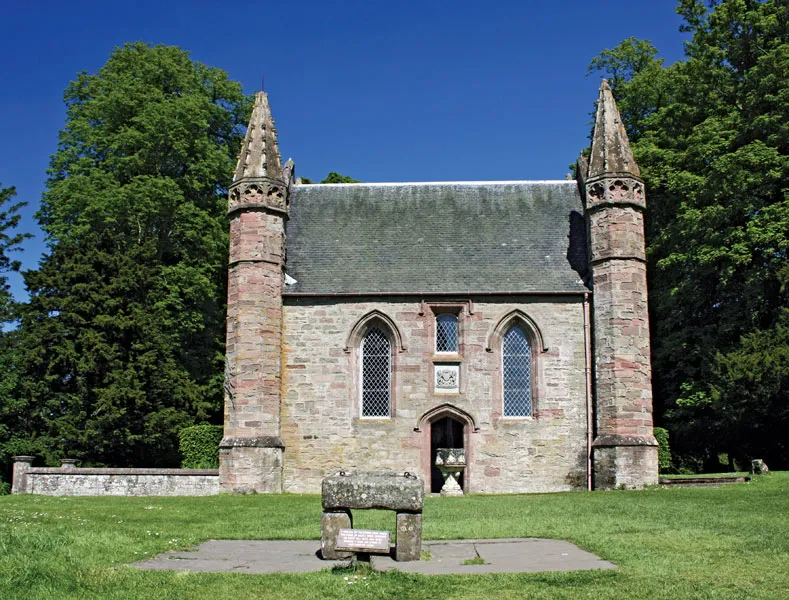
Meanwhile, Scotland came to an agreement with the executed king’s eldest son, who was crowned King Charles II of Scotland at Scone in early 1651. The colonies of Virginia and Barbados and several other islands agreed with Scotland and held Charles II as their king.
The now king of Scotland, Charles II, had formed an army of English and Scottish Royalists, prompting Cromwell to invade Scotland in 1650. After losing the Battle of Dunbar to Cromwell’s forces in September 1650, King Charles II led an invasion of England the following year, only to suffer another defeat against a huge Parliamentarian army at Worcester. The young king narrowly escaped capture, by fleeing dressed as a girl in disguise. But the decisive victory ended the Third English Civil War.
An estimated 200,000 English soldiers and civilians were killed during the three civil wars, by fighting and diseases spread by the armies. (Our war between the states was the deadliest war in our history).
After the third civil war ended, the Protestant Puritan Parliament was the ruler, but soon, in 1653, Oliver Cromwell became the Lord Protector of the Commonwealth of England, Scotland and Ireland and at his death, his son reigned.
WHO FINANCED THE COMMONWEALTH?
The Amsterdam, Holland Jewish bankers financed a mercenary army for Oliver Cromwell who was a member of England’s House of Commons. The purpose of this was to serve their mutual goal to overthrow the Royalty of England. (It was the Jews and later the Communist Party whose goal was/is to overthrow the Royalty of the “seed of David”.)
England was involved in a religious civil war. The Dutch Jewish bankers used Cromwell to divide and conquer in the name of militant Calvinistic Protestant Puritanism. England’s King Charles I lost the military battles and fled the country. The Protestant Parliament became the ruler instead of the Monarchy. This was a violation of God’s law.
Soon Parliament discovered the foreign intrigue behind Cromwell and the Civil War which included tactics of economic warfare in which Amsterdam used international commerce to destroy the English economy. As a result, Parliament declared war on Holland in 1652. Cromwell, loyal to the Amsterdam Jewish bankers, reacted in 1653 and dismissed Parliament and made himself the supreme power and ended England’s war against Holland in 1654. Then followers of Cromwell took sword-in-hand and slaughtered countless Christian priests and laymen who opposed his Calvinistic Puritan version of Judeo-Christianity. This was another violation of God’s law.
In 1656, Cromwell gave the world a glimpse into the distant future when, as an agent of the Amsterdam Jewish bankers, he attempted to create a League of Protestant Nations as an anti-Catholic world government that bankers would secretly control. The first task put before the Protestant League of Nations in 1657 was to attack the Spanish Netherlands because it was a Catholic threat to Amsterdam. Cromwell blessed the Jews and removed England’s restrictions on Jewish immigration in 1657, but they did not relocate en masse until 1664. This was a violation of God’s law.
Soon after this massive relocation, in 1665, the bubonic plague struck England. In 1666, the Great Fire of London occurred. England was suffering from God’s judgment for disobeying His Word.
CROMWELL’S MANY ATROCITIES
Cromwell, as the Lord Protector, committed many major atrocities and a few good moral laws. Here is a record of both:
- He replaced Parliament with his own people, Puritans.
- He confiscated the lands of his one-time friends, then declared them his enemies, and gave their lands to his followers.
- He killed thousands of non-Puritan Christians who surrendered to his armies.
- His armies looted cities, killed his opponents and their wives and children.
- Ships were loaded with tens of thousands of Catholic captives from Ireland to be sold into slavery in Virginia and elsewhere in the Caribbean.
- In the 1650’s, against public outcry, he opened England’s gates to international Jewish bankers, thereby infecting England with usury for the first time in almost 400 years.
- In 1657, Cromwell lifted the restrictions on Jewish immigration.
- Cromwell shut many inns and closed all the theaters.
- Most sports were banned.
- Gambling dens and brothels were closed.
- Sunday became a very special day under the Puritan leader. Most forms of work were banned. Women caught doing unnecessary work on the Holy Sabbath were put in stocks.
- He outlawed the celebration of the Mass of Christ (Christmas), Easter and Whitsuntide.
- He outlawed all monopolies.
- He fined anyone who swore. If the person continued this practice he was put in prison.
- He believed that women and girls should dress in a proper manner. Make-up was banned.
- Once a month, there was a mandatory fast day.
- All of Cromwell’s laws were enforced by his army.
Oliver’s rule lasted about five years before he mysteriously died. He gave his Lord Protector status to his son, Richard, who proved very inept. Richard Cromwell soon abdicated his position and the Parliament once again remained the supreme force in England. But soon Charles II was back in England ruling as the restored king.
CHARLES II RESTORED
In 1660, King Charles II was restored to the throne of England. But how was he restored? The hidden truth is that Cromwell opposed England’s monarchy and so declined wearing the crown of England in 1656. Instead, he amended the constitution to provide himself with more powers.
Charles II, the son of the beheaded king of England, while exiled, sought to unseat Cromwell. He made a tactical attempt to make peace directly with the Amsterdam Jewish bankers. Charles II offered the Jewish bankers the legitimate support of England’s Royal House if they would remove Cromwell. And what happened? Cromwell mysteriously fell ill and died in 1658 at the age of 59 after the Jewish Amsterdam bankers accepted the deal with Charles II. They agreed to pay Charles II thousands of guilders annually to be their monarch (100 guilders equals about $10,000 USA dollars).
Charles II was restored to the throne, but he was not sincere in his deal with the Jewish bankers and entered into a secret agreement with Louis XIV of France to declare war against Holland where the Jews were living. King Charles’ nephew, William of Orange, was a political leader in the United Netherlands and on behalf of the Amsterdam Jewish bankers, William persuaded King Charles II to stop the war.
With the reinstatement of King Charles II, he took out his revenge of the executors of his father. He had the judges and all who signed the death warrant of his father executed. He even had Oliver Cromwell’s grave dug up and hung him in effigy with his chopped-off head put on a spike.
King Charles II also reversed many of Cromwell’s laws, such as the celebration of the Mass of Christ and Easter were now legal, the theatres were open and for the first-time women could be actresses, gambling was now permitted, brothels were open, sports were permitted, etc.
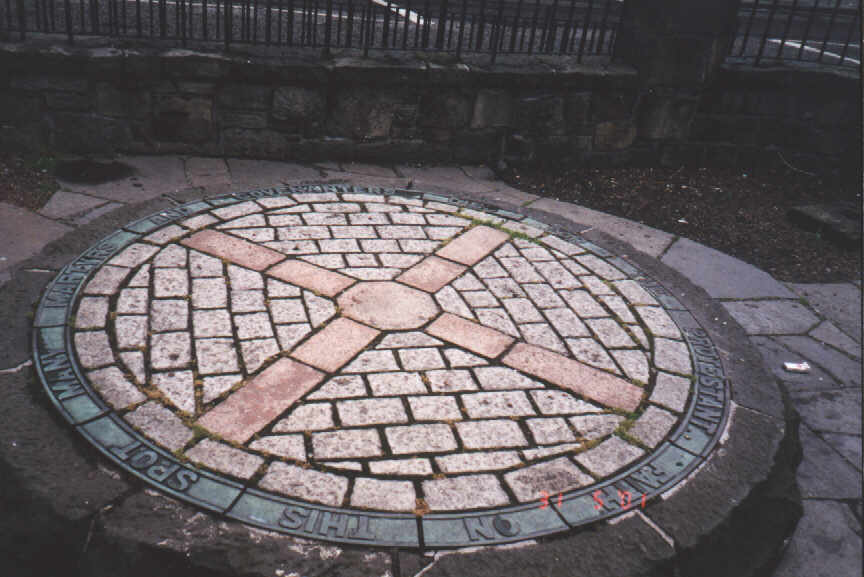 But the Covenanters lost control of their kirk and became a persecuted minority, leading to several armed rebellions. In fact, the time from 1679 to 1688 was known as “The Killing Time.” “Many Martyrs and Covenanters died for the Protestant Faith on this spot.”
But the Covenanters lost control of their kirk and became a persecuted minority, leading to several armed rebellions. In fact, the time from 1679 to 1688 was known as “The Killing Time.” “Many Martyrs and Covenanters died for the Protestant Faith on this spot.”
But King Charles II had two very major disasters that he had to face.
- In 1665 was the Bubonic Plague which killed many of the English citizens. It was more infections than that in 1625 and 1636. A quarter of the population of London died. King Charles II escaped to Oxford during this plague. (We had a pandemic.)
- And in 1666, the London fire which destroyed most of the capital. (We have serious fires in our western states.)
Besides these two disasters that were not of his own making, King Charles II had other disasters that were of his own making.
First, in 1662, he married a young teenage Catholic from Portugal.
Second, England was fighting Holland at this time and the Netherlands navy destroyed England’s navy. King Charles II had to sue for peace.
Third, after the city of London was rebuilt after the fire, England got together with France and Louis XIV to take on the Dutch once again.
Fourth, in 1670 Charles II signed a secret document with France. The Treaty of Dover had in it that King Charles II had to convert to Catholicism.
Fifth, in 1672 King Charles II made a religious intoleration document which also included Catholics.
Sixth, King Charles II document was leaked, and England was furious against Charles II.
Seventh, the Treaty of Westminster was signed in 1674 and there was peace between England and Holland.
Eighth, King Charles II converted to Catholicism on his death bed in 1685.
But there is another view of King Charles II that isn’t always mentioned. He was nicknamed the “Merry Monarch” for good reason. Indulgence, exuberance and pleasure became the new aspirations of the upper classes. The arrival back to London of the king saw the capital city become the new fashionable, social hub of the country and the sinful playground of the nobility.
The king and his courtiers brushed shoulders with the common folk in the city parks, and the court especially was host to raucous parties and illicit encounters. It was just the opposite of what the moral laws were when Oliver Cromwell was the Lord Protector.
While in exile, King Charles II had spent considerable time at the French court, which was notorious across Europe for its decadence and sexually active courtiers and ladies. On his return to England, he brought many of the French trends with him, and turned the previously dry and plain English court into a hedonistic palace of pleasure.
The upshot of all this was that at Whitehall, the palace of the King, pleasure, entertainment and free love reigned supreme. King Charles II surrounded himself with young, bawdy courtiers who were concerned more with having fun through gambling, drinking, womanizing and partying than anything else like work or family. The ladies of the court were having a great time too – they were encouraged to be witty, intelligent, brazen, and sexually liberated rather than following the outdated ideals of women who were passive, obedient, and virtuous. The palaces were a merry-go-round of sexual free love, with women playing an equally active role as men. This was a violation of God’s holy laws.
CONCLUSION
So which side would you be on if you lived in Great Britain in the 1600s? The Cavaliers? The Covenanters? The Roundheads? The Royalty? The Puritans? The Pilgrims? The Presbyterians? The Parliament? The Catholic?
If you lived in Puritan New England, the holiday of the Mass of Christ and Easter were outlawed during the time of the Republic of England. Many of the Puritan laws of England were passed on to the colonies, except the “cavaliers” colonies refused to accept the laws of the Puritans; for they had the exiled king, Charles II, as their king. And are there any Presbyterians who would pick Charles II, who was responsible for the death of thousands of their former churchmen? But who would be in favor of the riotous living of King Charles II, with his numerous mistresses and at least 14 illegitimate children to be the head of your church?
North and South America were drawn into the thousand-year-old conflict among the same four forces competing for control over Europe:
- The Catholic church,
- The Jewish Cabal,
- European royalty, and
- The secret societies; Occult.
Democracy has been used as a political stratagem to replace or at least confine, the so-called “Divine Right of Kings”. In America it has been said that the Constitution is king, and a fair king it was, not perfect, but governments of men have never offered perfection.
Democracy replaced the kings of Europe, and in America, since 1861, democracy has been subverted and circumvented its “king”, the United States Constitution.
Democracy is promoted as the voice of the people but time has proved that democracies can conceal hidden oligarchies (a ruling elite) usually funded by the occult, through which the legislation of We the People is written and adjudicated to serve the occult agenda of the globalists. Hypocrisy abounds.
To be continued.
Blessed be the LORD God of Israel.

